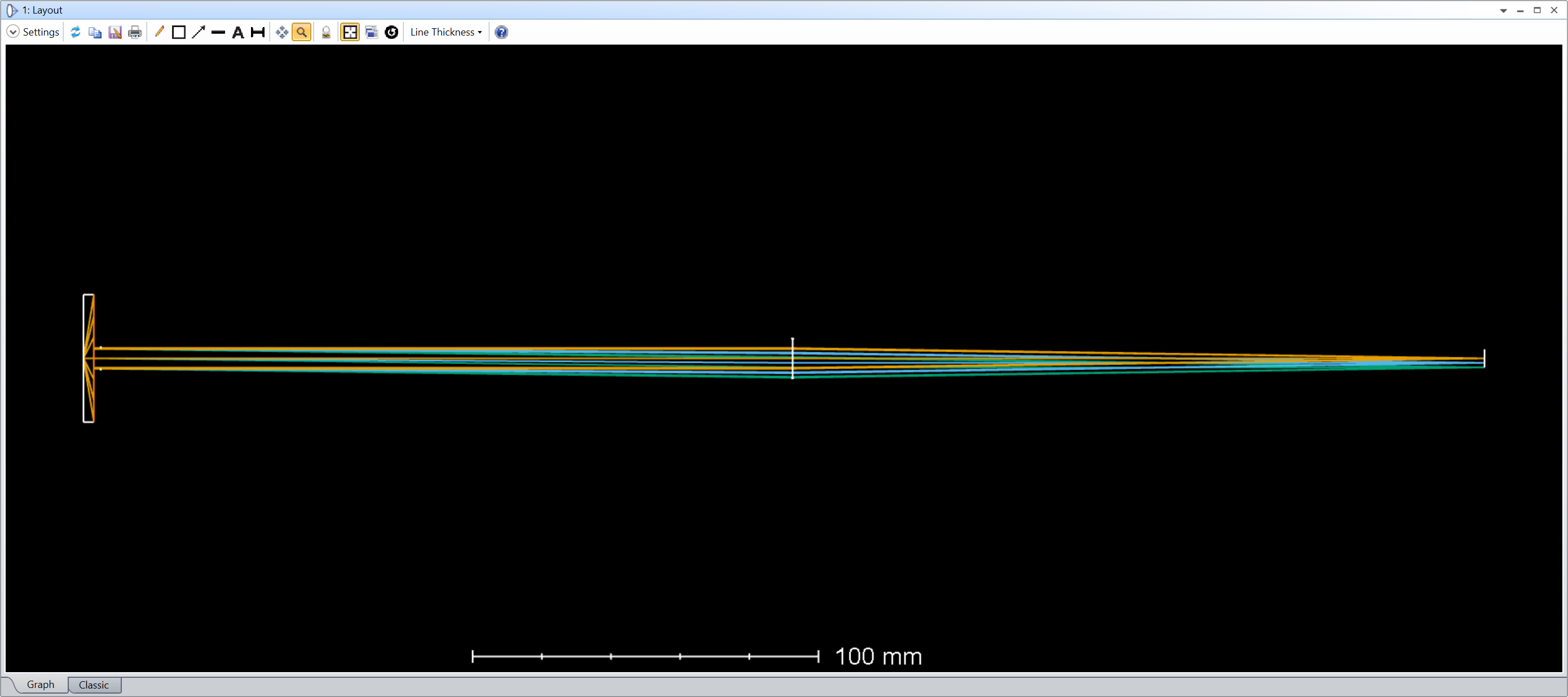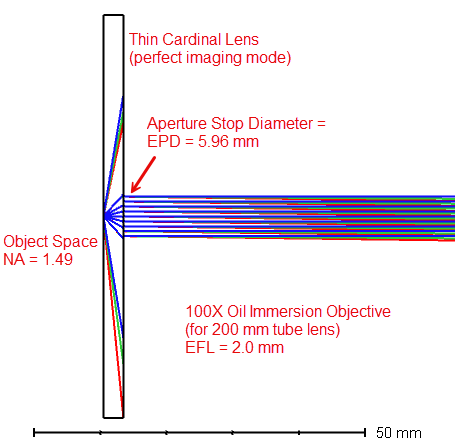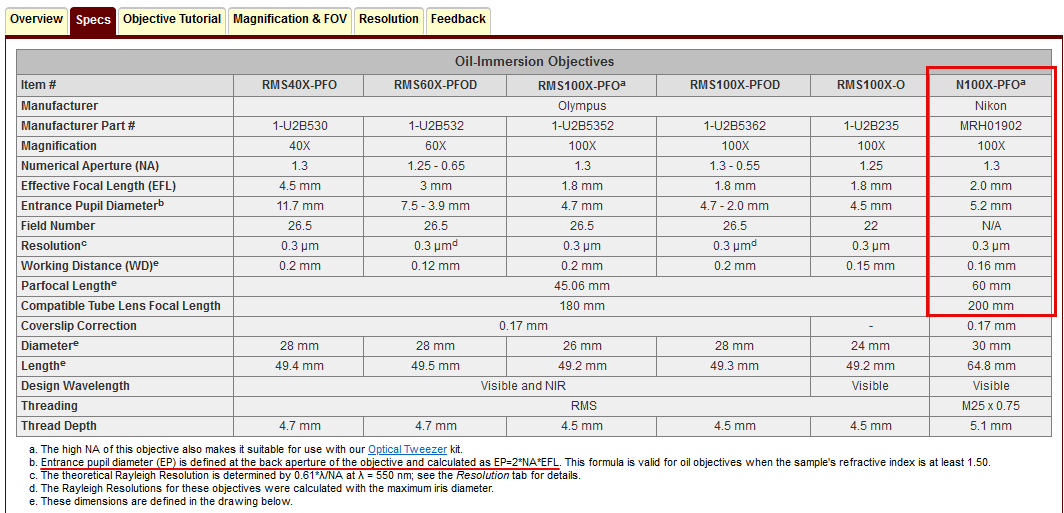Dear Zemax Users,
I want simulate a system where sample (has height of 26um, defined by three fields) is positioned at a focal distance from the microscope objective (100x, NA =1.49 ) and the collimated beam after objective is re focused by another lens (a tube lens of f= 200mm, matched with the objective) to form an image. How to make sure that the beam after objective is collimated and the image formed is exactly 2.6mm?
Thanks.













